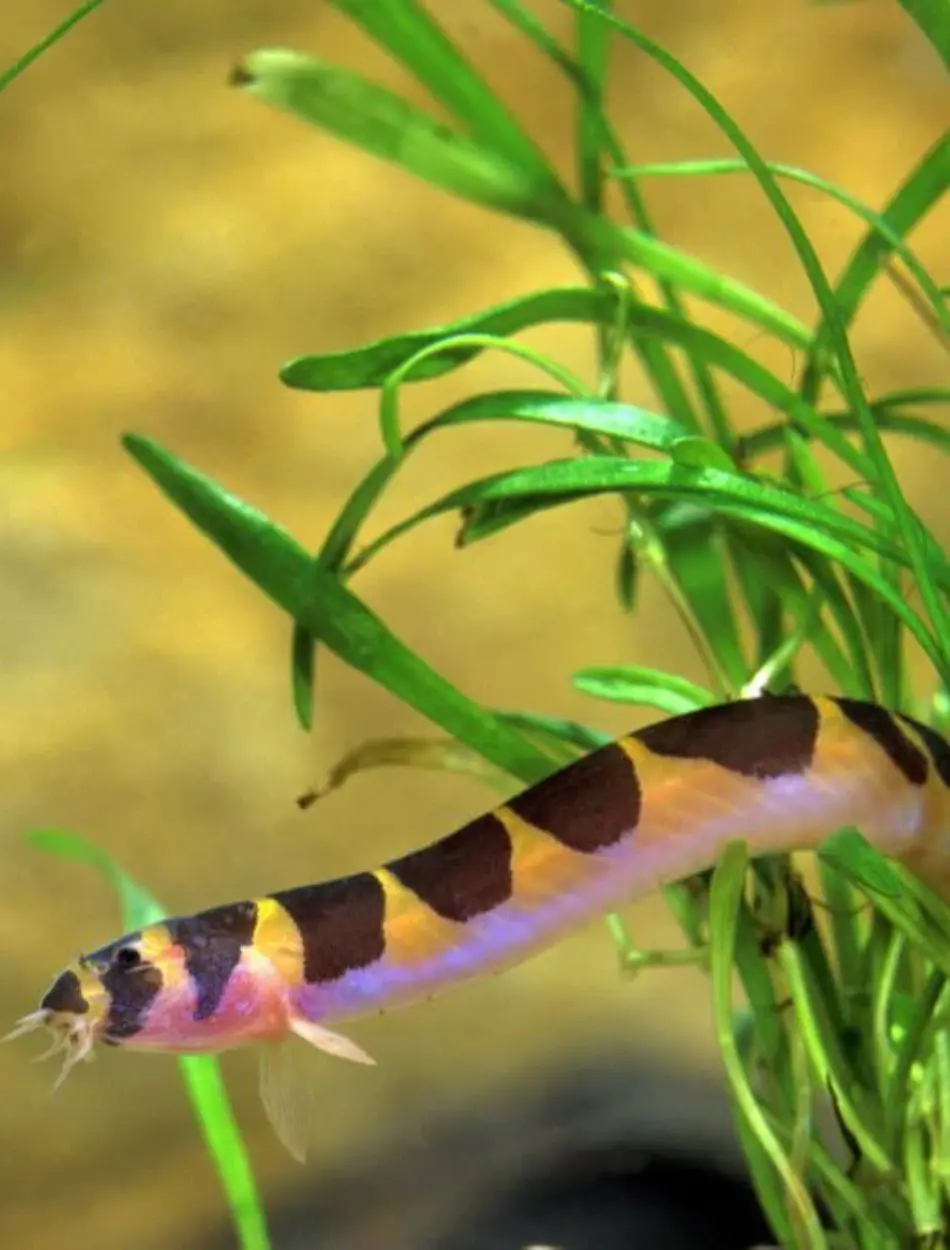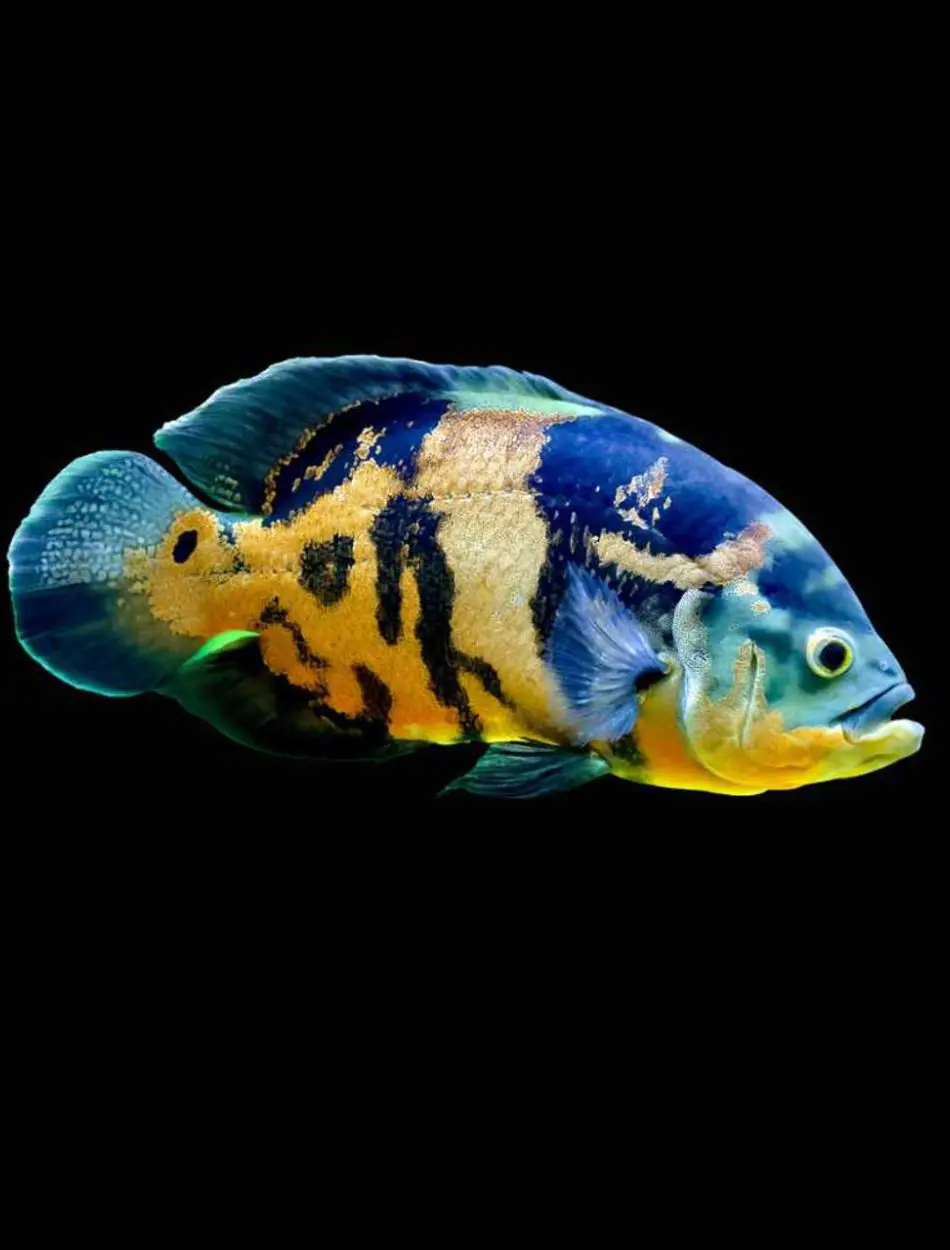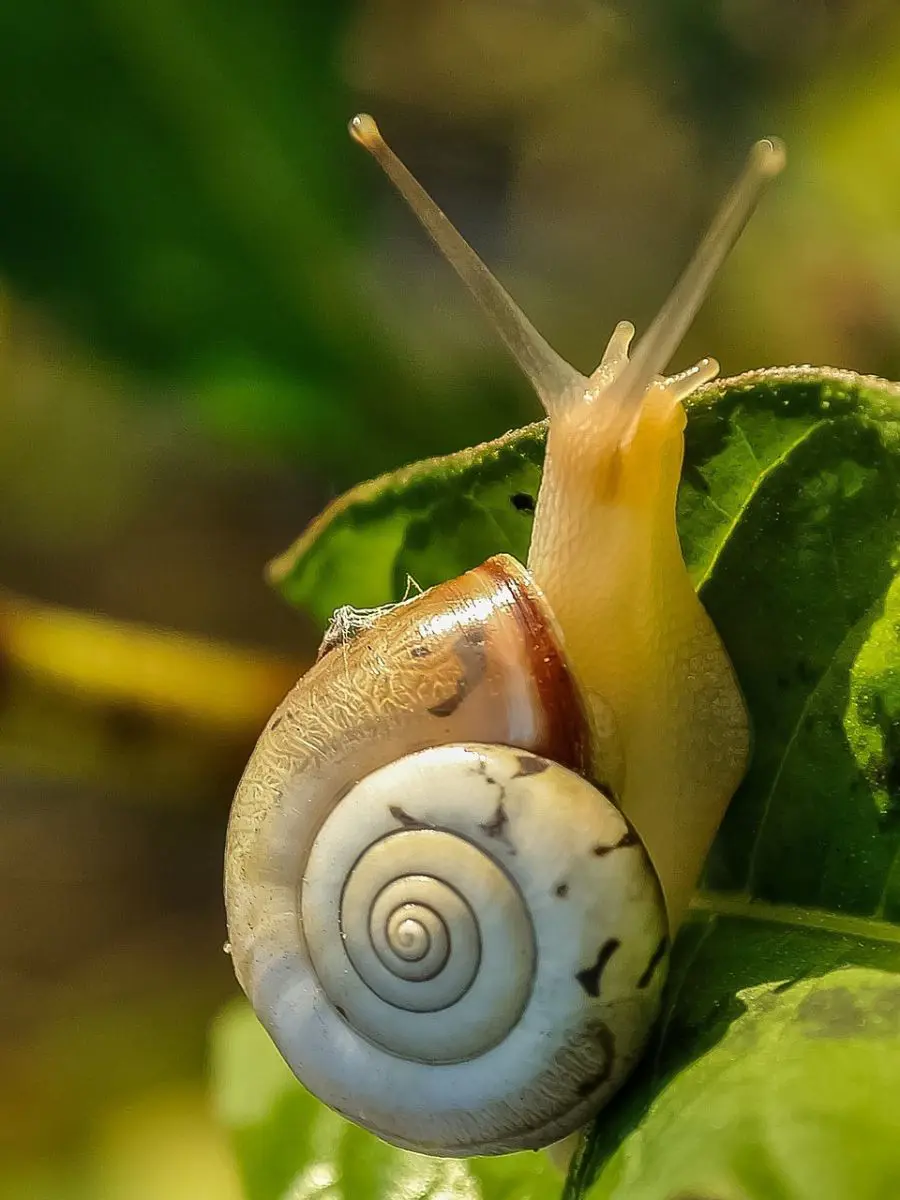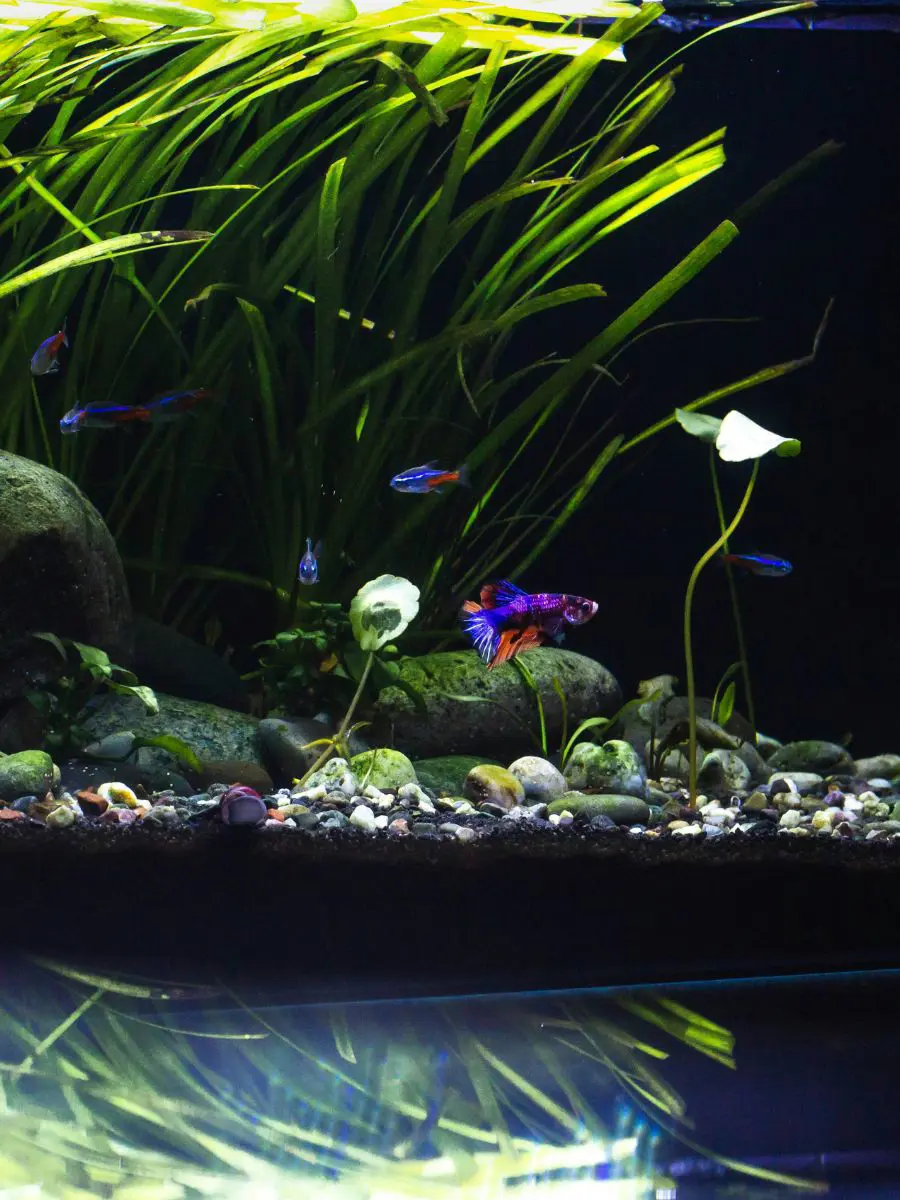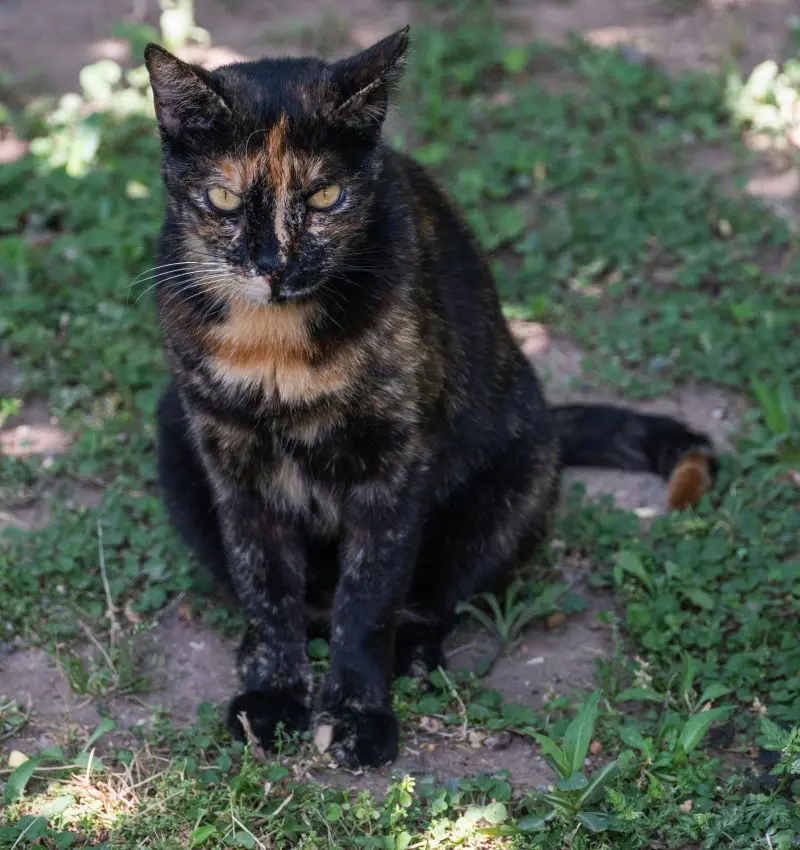17 Cichlid Tank Mates For Your Aquarium
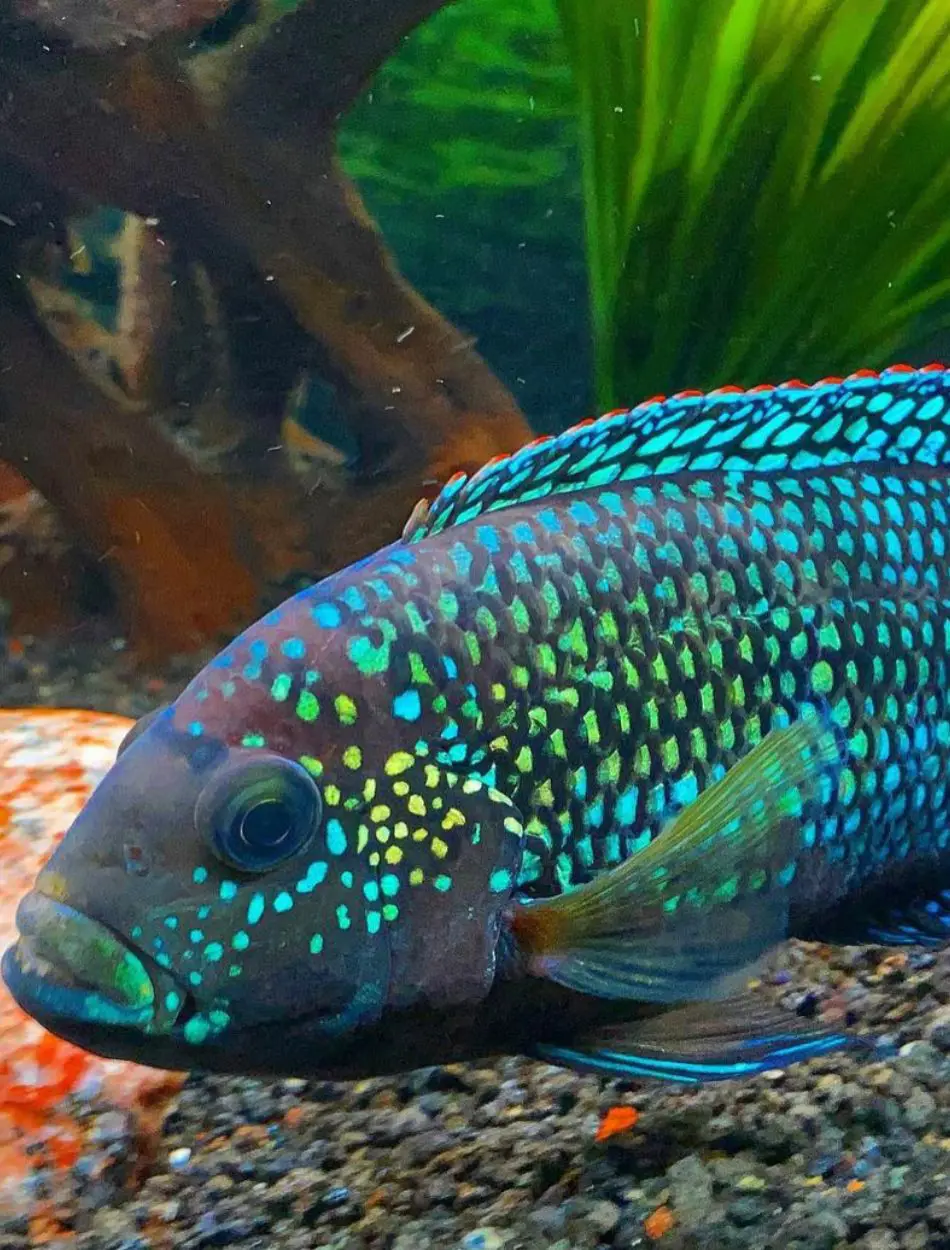
Cichlids are one of the diverse and captivating freshwater fish that are known for their vibrant colors. They are found in tropical America, mainland Africa, Madagascar, and southern Asia.
These freshwater fish have elongated streamlined bodies with pointed to more rounded head shapes. Their elongated body helps them navigate through the currents swiftly. They are well-known for their striking and diverse coloration that ranges from bright blues and reds to subtle browns and greens.
1. Clown Loaches
Clown loaches are popular freshwater fish that are peaceful and lively. They have vibrant orange bodies with bold black stripes that resemble the pattern of a clown's costume. Their bodies are long and slender and grow up to 12 inches.
They are social fish that live in groups. Their peaceful nature makes them a compatible mate for various other fish species including cichlids. They prefer to live on the lower levels of the aquarium which avoids contact with more aggressive cichlids. To keep these two species together, it is important to ensure that the tank is large and provides enough space for both.
In addition, their diet preference is also similar, which makes them compatible. Clown loaches can hold their own, especially in larger tanks where they can establish their territory. With proper planning and a suitable environment, cichlids and clown loaches can coexist peacefully.
2. Plecos
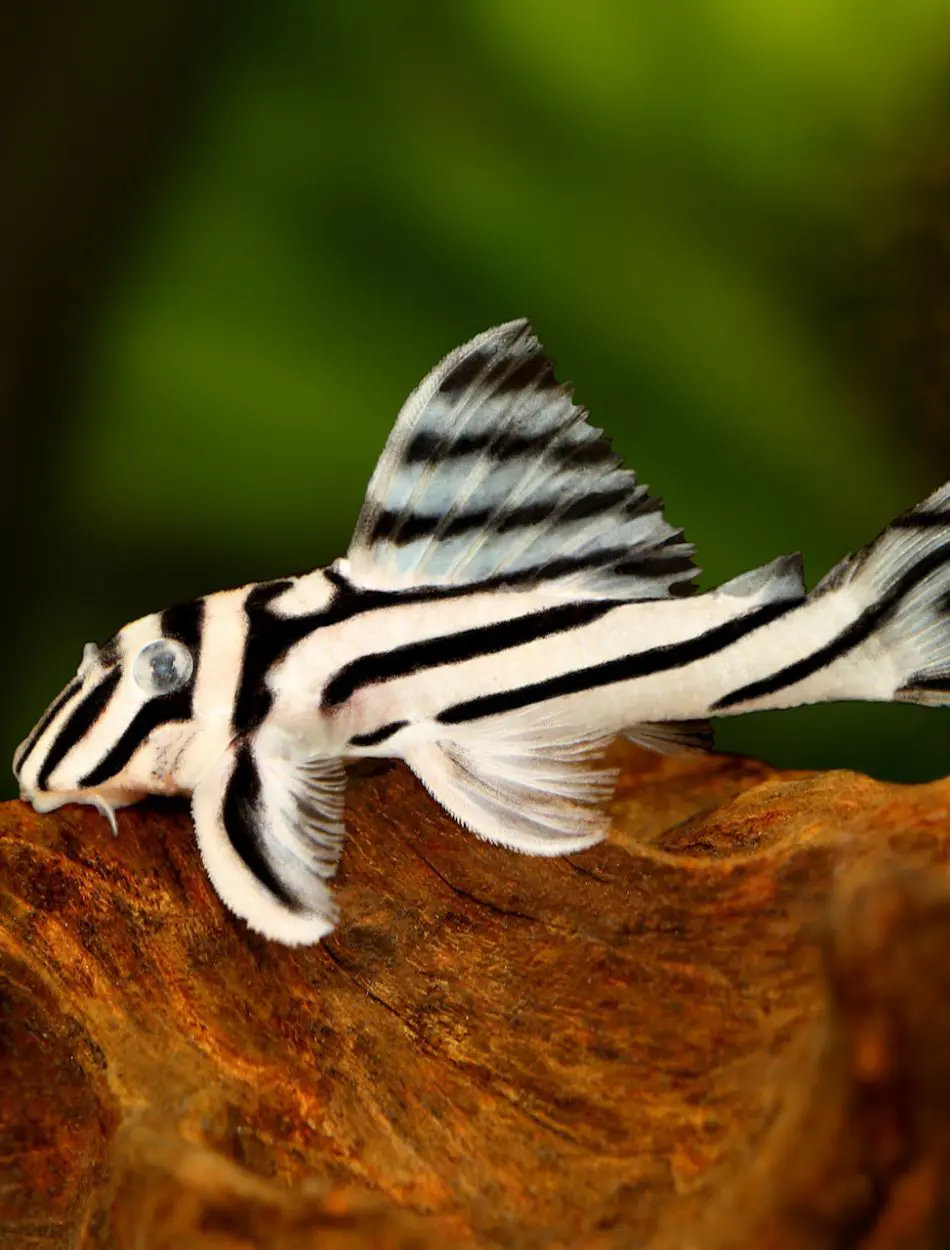
Plecos are a group of catfish species that are a popular choice for freshwater aquariums. They are bottom-dweller fish that have a sucker-like mouth used to cling to surfaces and graze on algae. These fish are generally peaceful and calm, resulting in their compatibility with various tank mates, including cichlids.
They are bottom-dweller fish that spend most of their time at the bottom of the tank and feed on algae, leftover food, and plant matter present there. Cichlids occupy a different area of the tank. Due to this separation in activity zones, there is less chance of direct competition and aggression.
Their dietary preferences are also different from each other. While plecos eat algae, cichlids are omnivores that eat a mix of plant and animal matter. This difference means there is less competition for food resources resulting in a harmonious environment.
3. Rainbowfish
Rainbowfish are colorful fish that are known for their beautiful array of iridescent colors. They are calm, peaceful, and popular in aquariums for their appearance and swimming patterns.
These active swimmers occupy the mid to upper level of the tank, whereas the cichlids dwell around the bottom or other parts of the tank. Due to the separation in the swimming zone, there is less competition and aggression between the two groups.
These freshwater fish are very peaceful and are less likely to provoke aggressive cichlids. To house them together, a larger tank with plenty of swimming space is necessary. Rainbowfish are omnivores that feed on flakes, pellets, live or frozen foods, and vegetables. Whereas cichlids, while having more carried dietary needs, share similar food preferences. This reduces the competition for food resources and ensures proper nutrition between both species.
4. Silver Dollar Fish
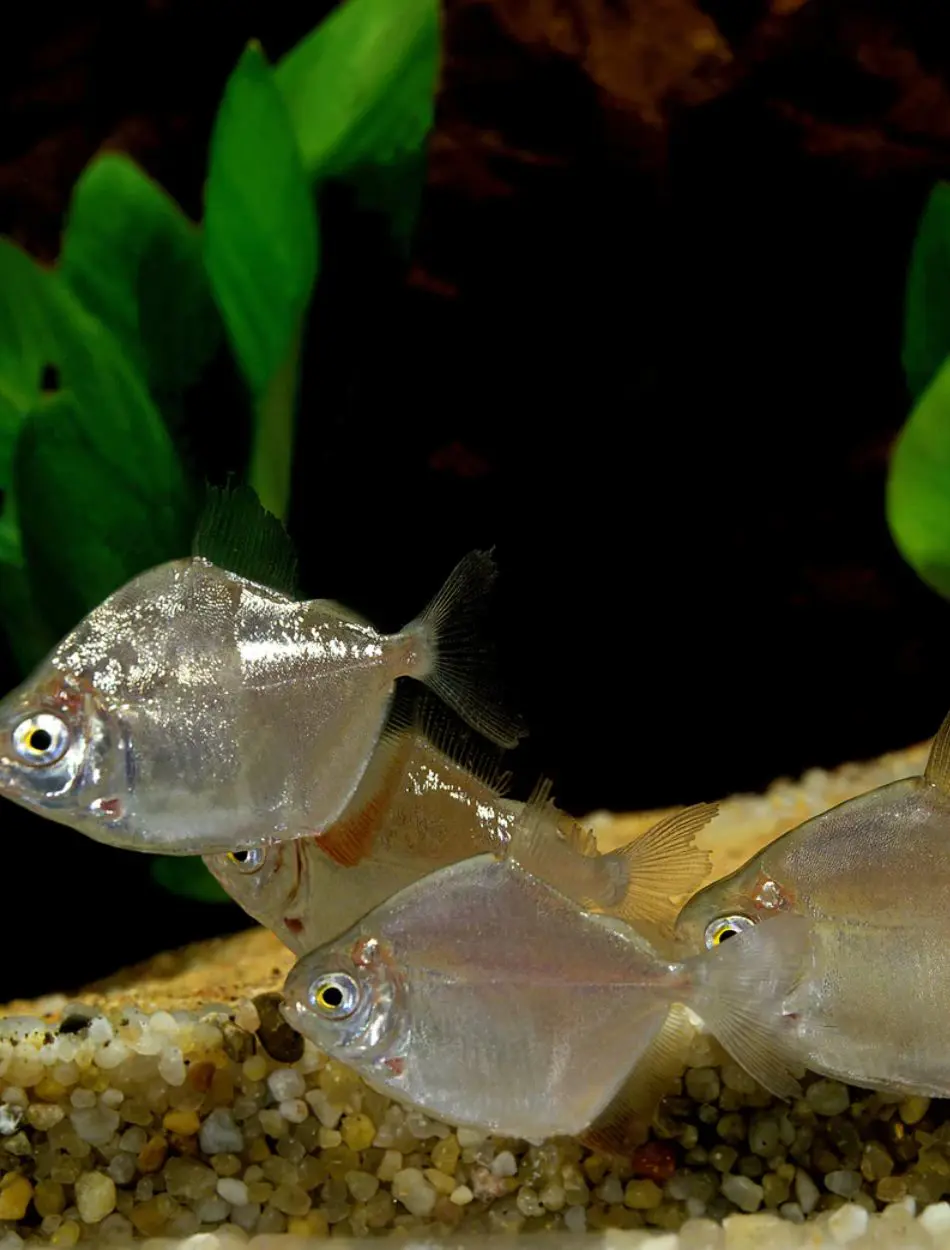
Silver Dollar Fish are famous aquarium fish that have a coin-like shape and shimmering and silver appearance. They have laterally compressed bodies that resemble silver dollars. Silver Dollars are compatible with other peaceful fish and can survive with many fish including cichlids.
These fish grow big which allows them to avoid being bullied by cichlids. They thrive in schools which helps them avoid interaction with more aggressive fish. Silver Dollars have a peaceful temperament which makes them less likely to provoke cichlids.
Unlike the omnivore nature of cichlids, Silver Dollars eat plant matter and are herbivorous. Due to this reason, they can thrive without competing directly with each other for food. Therefore, when kept in a suitable environment with proper precautions, Silver Dollars can live with cichlids in the same tank.
5. Giant Danios
Giant Danios is a freshwater fish that are active swimmers and have a striking appearance. Their hardy nature and vibrant color make them a popular choice for community aquariums.
They occupy the mid to upper levels of the tank, avoiding direct competition with bottom-dwelling and territorial cichlids. Moreover, they are schooling fish that stay together and avoid drawing attention from aggressive cichlids.
The hardy nature of giant Danios makes them resilient to different water conditions and tank setups that may be required for cichlids. Their dietary requirements are also similar to each other ranging from flakes, pellets, live, and frozen foods. This reduces competition for food resources and ensures proper nutrition.
6. Bala Shark
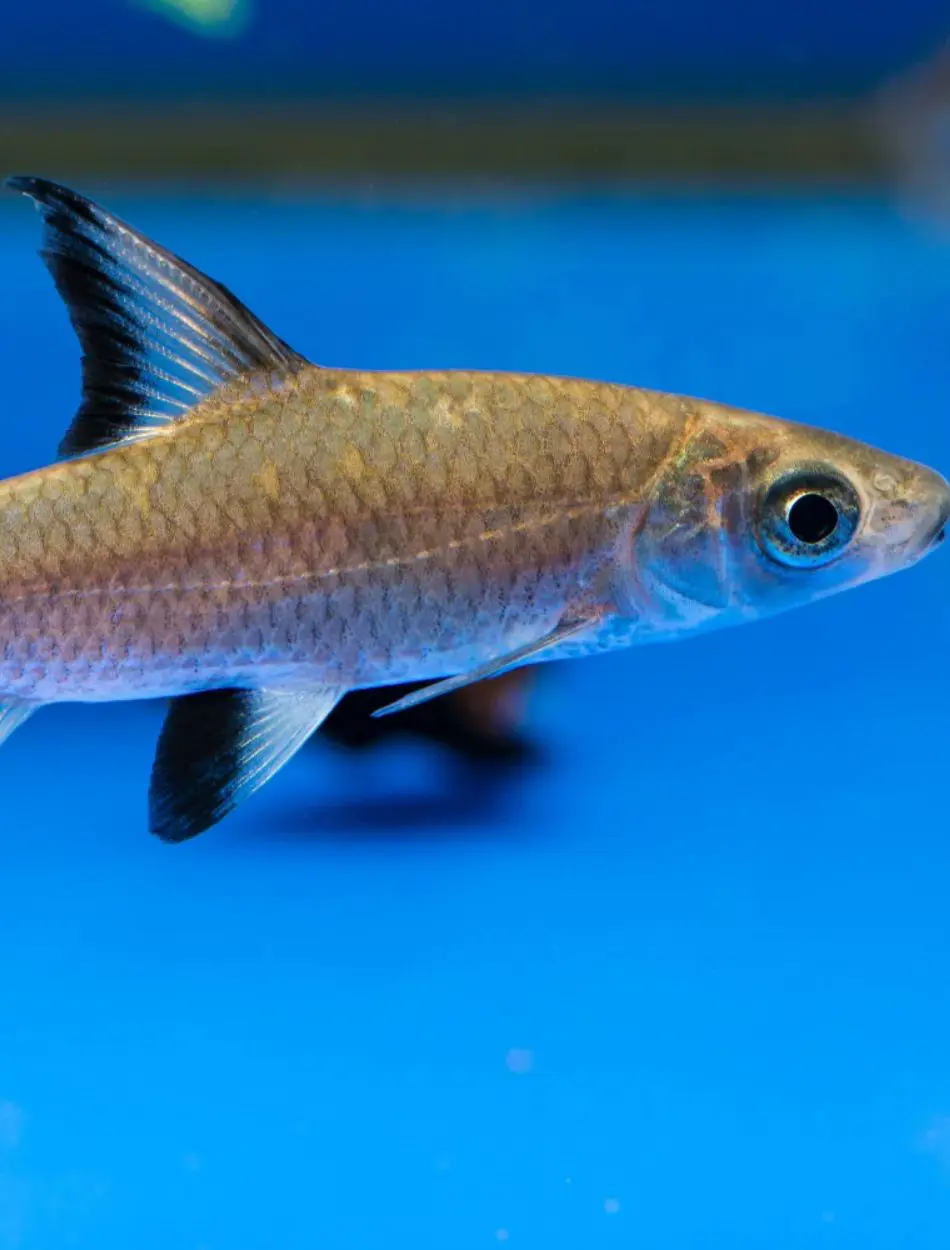
Bala sharks are freshwater fish that have a sleek, torpedo-shaped body with shiny, silvery color. They have distinctive black tips on their dorsal, pectoral, and caudal fins. Despite its common name, Bala Shark is not a true shark but a member of the Cyprinidae family.
They are calm, non-aggressive, and active swimmers who tend to avoid conflicts with cichlids. Moreover, their peaceful nature prevents stress and aggression in the tank. The swimming levels of these two species are also different. While Bala Sharks occupy the mid to upper level of the tank, cichlids prefer the bottom or middle level, reducing interaction and conflict between the two species.
These fish can grow big, up to 12-14 inches, and are less likely to be intimidated by smaller cichlids. Their dietary requirement is also similar to that of cichlids resulting in less competition for food.
7. Corydoras Catfish
Corydoras Catfish are small, peaceful bottom-dwelling fish well known for their charming appearance, social nature, and helpful behavior in substrate cleaning.
They are well known for their calm nature and social behavior. These fish thrive in groups and do not provoke or challenge dominant tank mates. Due to this peaceful behavior, they are good tank mates for cichlids. Their territories do not overlap as Corydoras stay near the bottom of the tank. Moreover, these fish stay in groups and do not provoke more dominant tank mates.
Regarding dietary needs, Corydoras are scavengers that feed on food particles and detritus from the substrate. Due to this reason, there is less competition between the two species for food resources.
8. Tiger Barbs
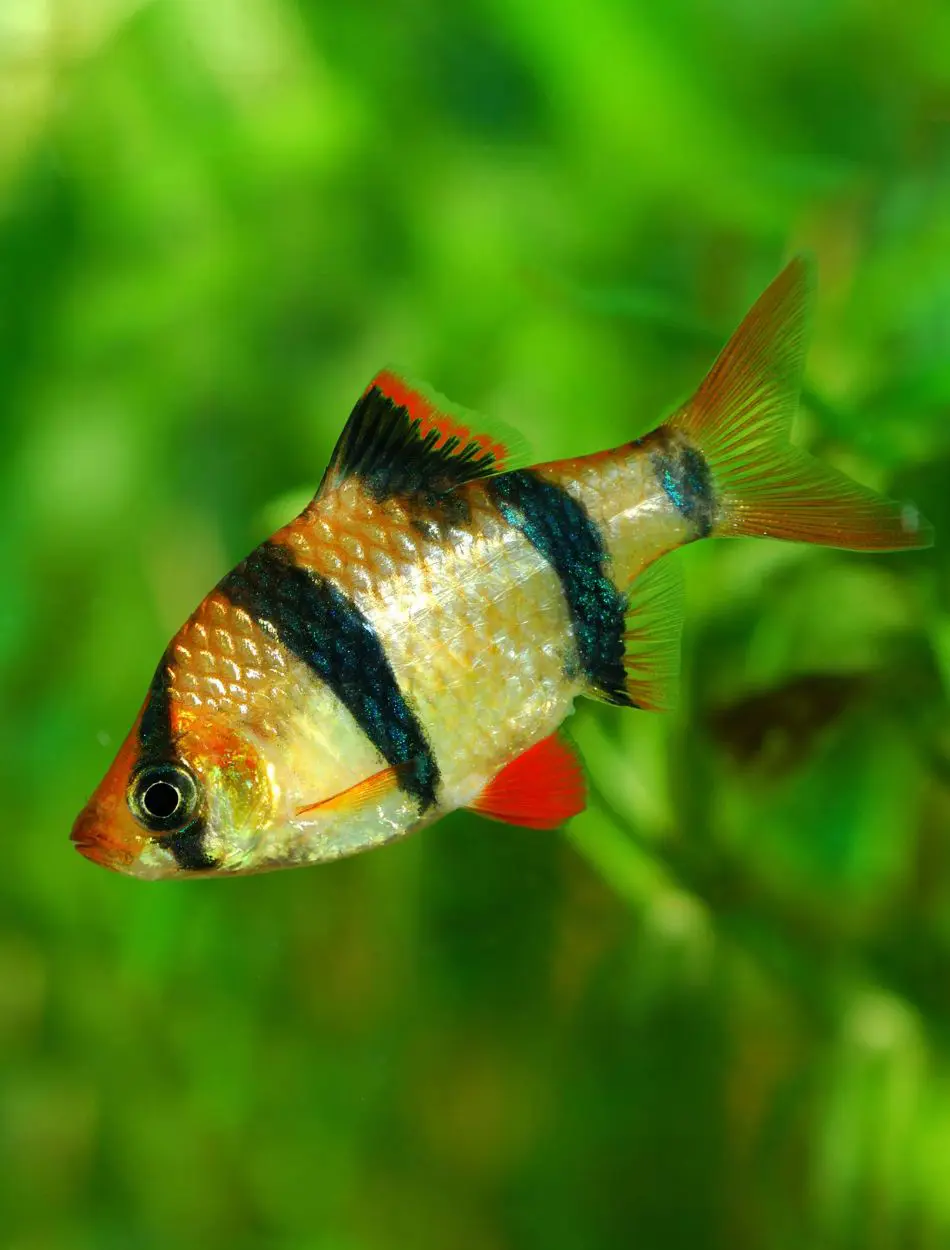
Tiger Barbs are lively, colorful freshwater fish that have a striking appearance and energetic behavior. They are easily recognizable from their bright orange or yellow bodies covered with bold vertical black stripes.
Known for their fast swimming abilities, they are quick with their movements and prefer to stay in groups. Due to this reason, it is less likely for cichlids to target them. They can be seen swimming in the middle to upper levels of the tank, whereas the cichlid prefers middle to lower levels. This difference causes fewer interactions and territorial disputes between them.
These fish live in schools, making them less likely to show fin-nipping behavior. Therefore, when placing these two species, it is important to keep Tiger Barbs in groups of at least 6. They feed on high-quality pellets or flakes, live or frozen food. Their similar food preferences reduce competition and simplify their feeding routines.
9. Red Tail Shark
The Red Tail Shark is a freshwater fish that has a sleek, torpedo-shaped black body with a vibrant red or orange tail fin. They are not true sharks but belong to the Cyprinidae family.
These fish are territorial and semi-aggressive, which can be a bit tricky to keep them with cichlids. However, with proper care and consideration, they are compatible with one another. When placing these two species together, the tank should be large enough with plenty of hiding spots. Red Tail Sharks are seen near the bottom and middle levels of the tank, minimizing direct contact with the cichlids.
They graze on algae in the aquarium along with supplementary food such as pellets, algae wafers, and blanched vegetables whereas cichlids prefer pellets and live or frozen food. Therefore, this separation in feeding habits reduces competition for food between them.
10. Bristlenose Pleco
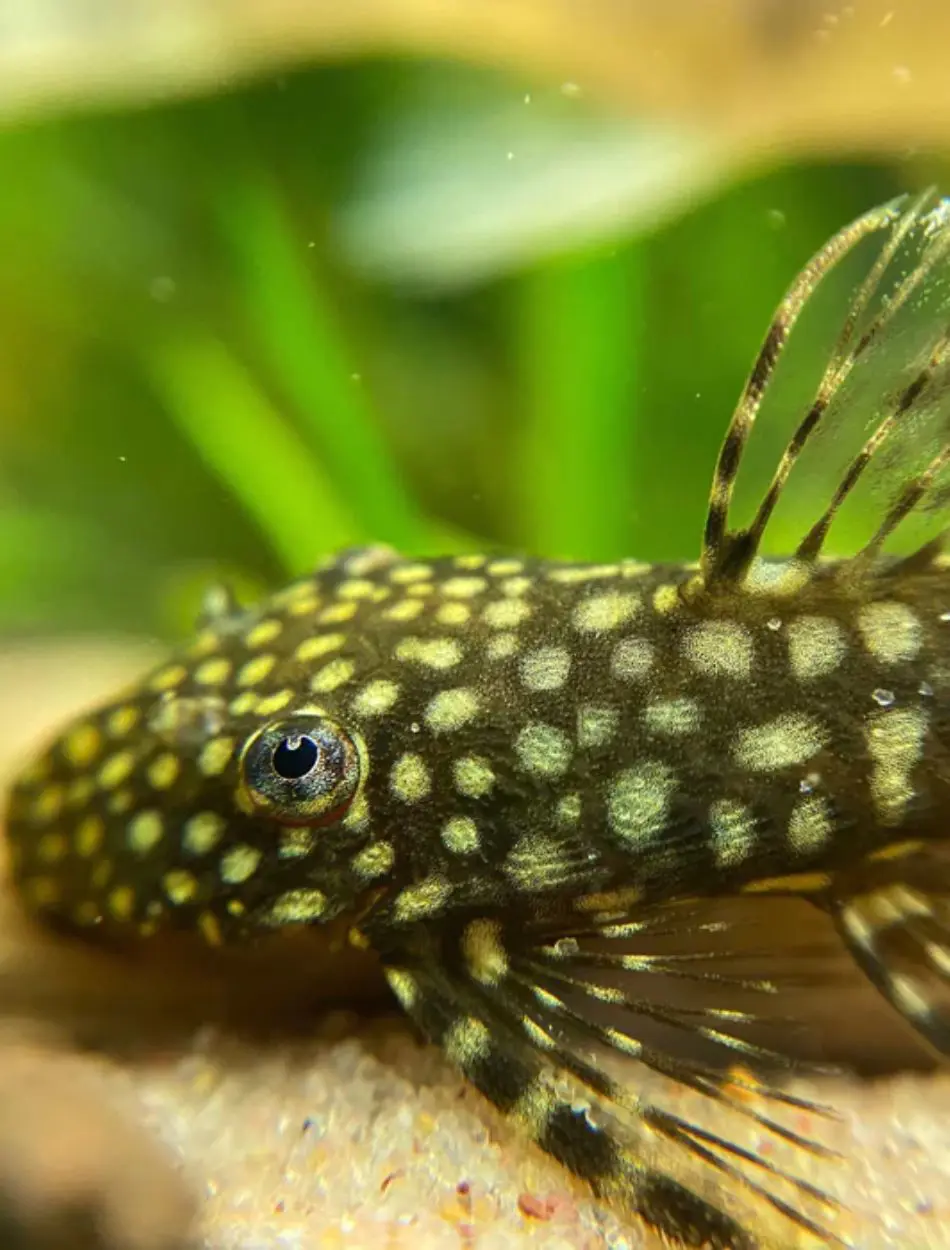
Bristlenose Pleco is a hardy freshwater catfish known for its algae-eating habits. They have bristle-like tentacles that develop on the faces of mature males, resulting in their distinctive look. Their bodies are flat with broad heads and are brown or gray with lighter spots.
These fish are bottom-dweller fish that spend most of their time on the substrate. Due to this reason, there is less interaction between the two species, reducing the chance of conflicts. They are also known for their peaceful and non-aggressive nature which makes them a compatible match with cichlids.
The primary food of Bristlenose Pleco is algae. They graze on biofilm, algae, and plant matter and help to keep the tank clean. Cichlids, on the other hand, are omnivores who eat a mix of flakes, pellets, and live or frozen food. Due to the difference in food preferences, it is less likely for them to fight over food resources.
11. Sailfin Pleco
Sailfin Pleco, known for its large size, impressive dorsal fin, and unique pattern can be compatible with cichlids when kept together. They have a broad, flat body with a dorsal fin that looks like a snail. Their bodies are dark brown with lighter spots.
Contrary to Cichlids, Sailfin Plecos are bottom-dweller fish that stay near the bottom level of the tank. This separation minimizes direct contact and conflict between the two species. Moreover, Sailfin Plecos are peaceful and non-aggressive, which makes them compatible to be kept with cichlids.
These fish are algae eaters and prefer to eat algae and biofilms found in the tank. They also eat blanched vegetables and algae wafers. Cichlids, on the other hand, are omnivores. The difference in their dietary needs allows them to live peacefully in the same tank.
12. Synodontis Catfish
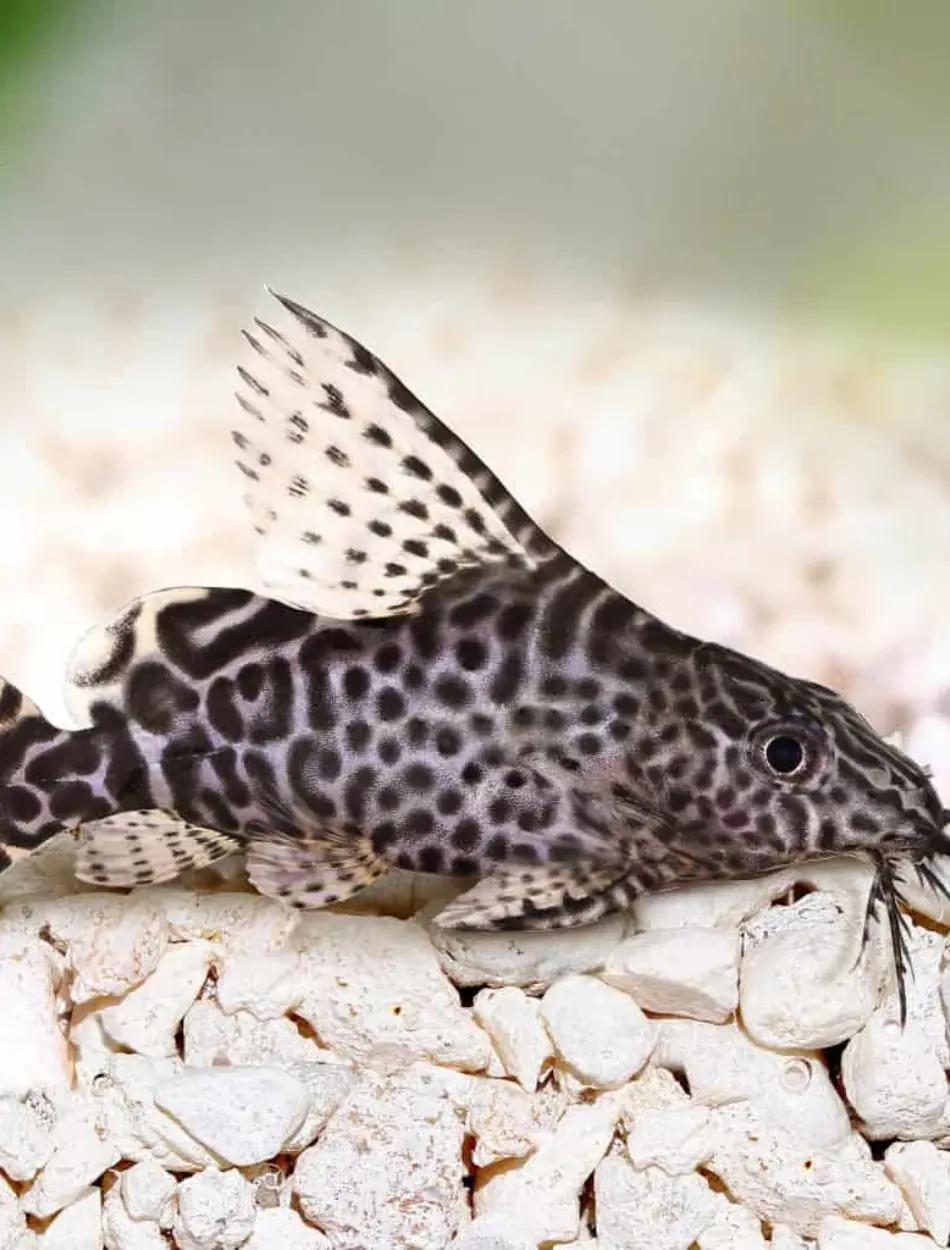
Synodontis Catfish are freshwater fish that have an elongated and somewhat compressed body shape. They have a set of barrels around their mouth used for sensing their environment. The body of these fish is often covered in smooth scales or skin with a rough texture.
When kept in the same tank, Synodonthis catfish and cichlids show different habits, allowing them to coexist well. Their swimming zones are also different as Synodontis catfish are found near the bottom of the tank and cichlids prefer to stay in the middle or upper levels. This separation helps minimize direct conflict between the two species.
These catfish are omnivores that feed on the bottom level of the tank. Cichlids, on the other hand, feed in the middle or upper level. Due to this reason, there is generally minimal competition for food between them.
13. Rosy Barb
Rosy Barb is a freshwater fish that has a sleek, elongated body with distinct pink coloration. They have a subtle metallic sheen and their fins are translucent with a slight hint of pink or red.
These are schooling fish that are active swimmers. They are generally peaceful but may show fin-nipping behavior if kept alone or in fewer numbers. Therefore, it is suggested to keep them in a group of at least 6-8.
Rosy Barb's are more likely to thrive with peaceful cichlids such as angelfish, keyhole cichlids, or certain South American cichlids. When it comes to dietary needs, they feed in the middle to the upper level of the tank. They do not compete directly with other fish for food. However, it is crucial to monitor them to ensure all fish are getting enough food.
14. Black Skirt Tetra
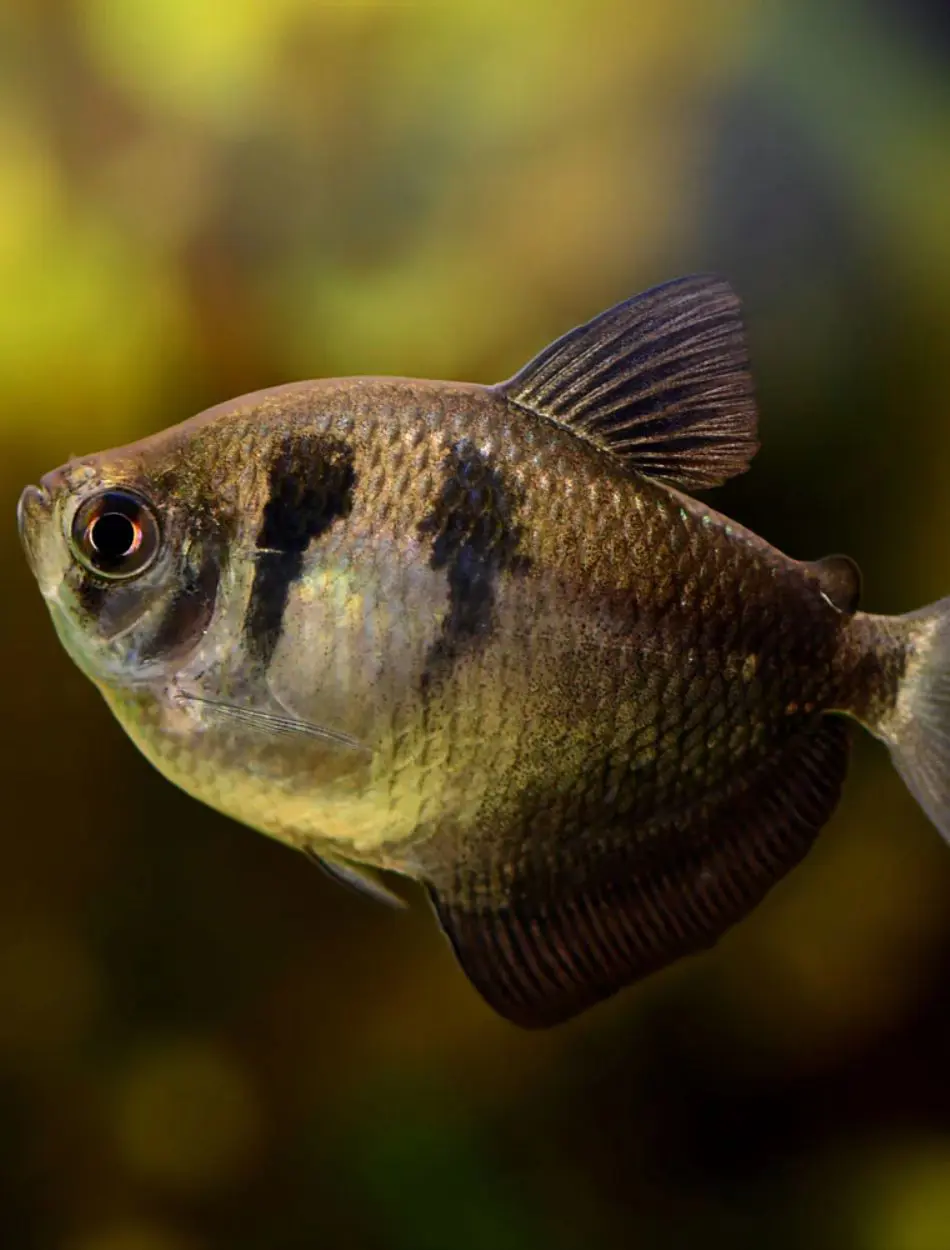
Black Skirt Tetra is a popular freshwater fish known for its predominantly black body and white or silver accents on their fins. They have long and flowy fins that give them a graceful appearance.
These fish are active swimmers that thrive in groups of at least 6-8. They are peaceful fish that love to be in community tanks with non-aggressive fish species. Black Skirt Tetra primarily feeds in the middle to upper level of the tank, whereas the cichlids spend their time in other vertical zones of the tank. Due to this separation in territory, they are less likely to fight with each other for food resources.
These black tetras are more likely to be compatible with cichlid species such as angelfish or keyhole cichlids. Despite their compatibility with cichlids, the interaction between these two species must be monitored time and again.
15. Zebra Loach
Zebra Loach, also known as the Striped Loach, is famous for its striking appearance. They have a black and white striped pattern that looks like a zebra all over their body. Their dorsal and pectoral fins are well-developed and help their agile swimming.
They are peaceful fish that get along with most non-aggressive cichlid species. Their playful and active nature makes them a good match for the less territorial cichlids. Zebra Loaches feed on the bottom of the tank and can be seen in the substrate searching for food. Cichlids, on the other hand, prefer different areas of the tank which reduces competition for the food.
Therefore, cichlids when kept with Zebra Loaches in a large spacious tank filled with plenty of hiding spots can co-exist peacefully.
16. Gouramis
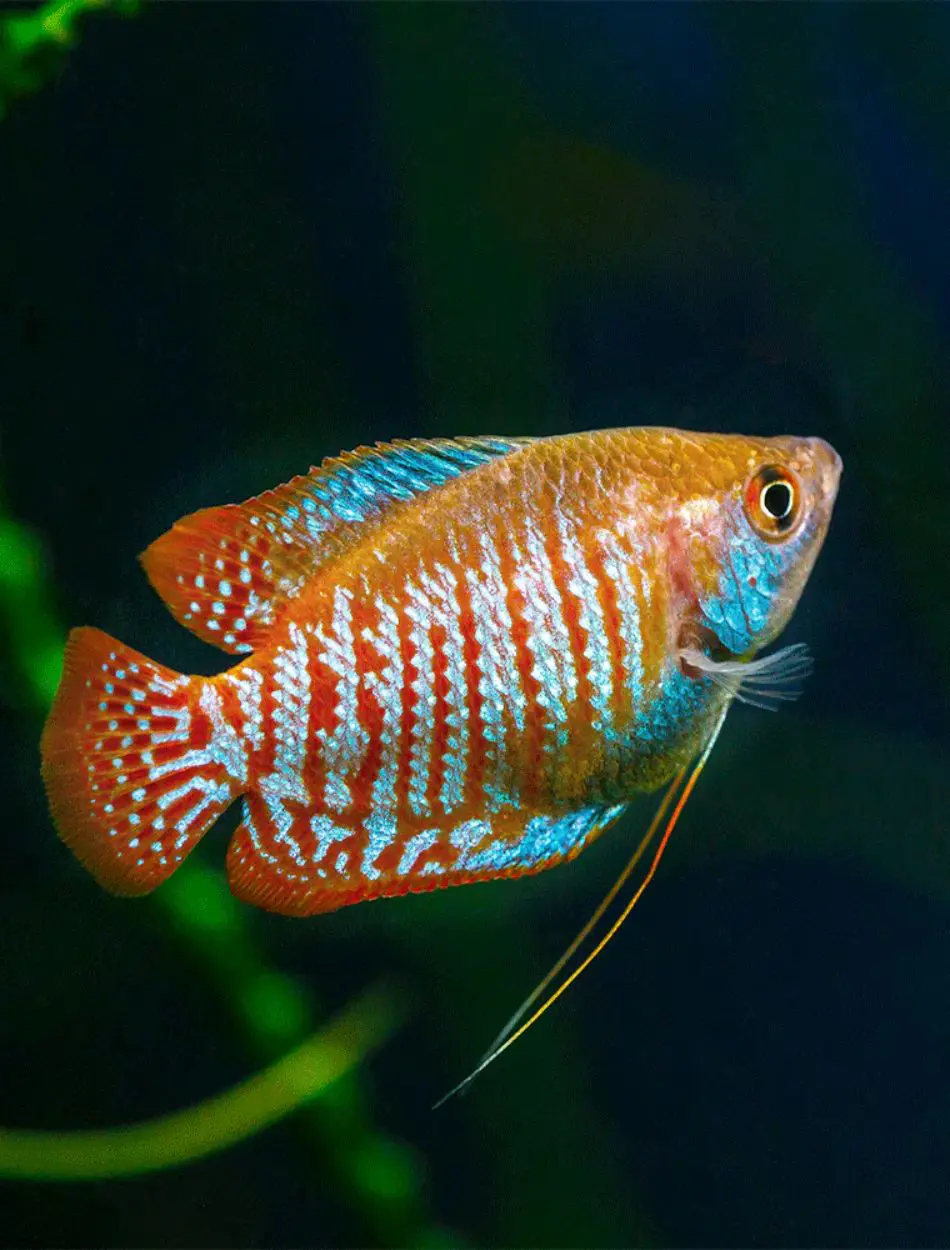
Gouramis is a popular fish in the aquarium trade that has an elongated body, long dorsal fins, and diverse appearance. Their colors range from metallic blues and greens to vibrant reds and oranges.
These fish are well-suited for community tanks due to their peaceful demeanor. They are calm and tend to avoid aggressive interactions with other fish species. In addition, their slow-moving behavior also makes them a suitable tank mate for cichlids.
Cichlids and Gouramis have different feeding zones resulting in less competition for food. Gouramis eat in the middle to the upper level of the tank, whereas the cichlids eat in the different vertical zones of the tank. Therefore, provided a large tank with ample hiding space and proper conditions, these species can be kept together in the same tank.
17. Kuhli Loach
Kuhli Loach is an eel-like-looking freshwater fish that has an elongated, slender body. Their bodies are covered in a pattern of alternating dark and light stripes ranging in color from black to brown.
They are peaceful, non-aggressive fish that thrive in groups of at least 4-6 individuals. These freshwater species can be seen burrowing into the substrate and hiding among the decorations. Due to their non-aggressive behavior, they are suitable to be kept with many non-aggressive cichlid species. Moreover, they are bottom-dwelling fish, which minimizes their interaction with cichlids who spend their time in the middle or upper part of the tank.
Kuhli loaches feed on the bottom of the tank and can be seen eating small invertebrates, detritus, and plant matter. Cichlids are omnivores that spend their time on the upper part of the tank. This difference in their territory and food preference makes these species compatible as tank mates.
Recent posts
Fish
Why Is My Fish Tank Cloudy?
Cloudy fish tanks can be frustrating for any aquarium owner. Especially if one has put in the necessary effort to accomplish a beautiful underwater setting. Whether you are an inexperienced aquarium holder or one of the pros, cloudy water may be the ...
20 Long Freshwater Fish For Aquarium
Having a range of long, gorgeous fish in your freshwater aquarium can make it an immensely fulfilling experience. Choosing the right fish is the first step to an exciting freshwater aquarium, and long freshwater fish are among the best options. ...
20 Aggressive Fish Tank Species
When setting up an aquarium, the right choice of fish species is indispensable since some fish have aggressive natures, which could breed conflict in a community tank. These fish are known to be territorial and most of them require special care ...
Ramshorn Snails Care Guide And Tank Mates
Ramshorn snails, familiar to the family Planorbidae, are an absorbing group of freshwater gastropods. They thrive in a variety of environments from clean to moderately polluted waters. Despite being considered a pest snail by many, the ramshorn...
Scarlet Badis Fish Profile And Tank Mates
Scarlet Badis are among the most fascinating and rewarding species to keep in a home aquarium. Especially for the aquarists who will go the extra mile to suit their needs regarding proper care and raising. In terms of their bright coloring, intriguin...
Do Betta Fish Need a Filter?
Siamese fighting fish, also known as bettas, are arguably the most widely kept beautiful freshwater fish for a home aquarium. Similarly well known are the preservation practices for these vibrant, frilly-finned pets, which are concerned with, of cour...

